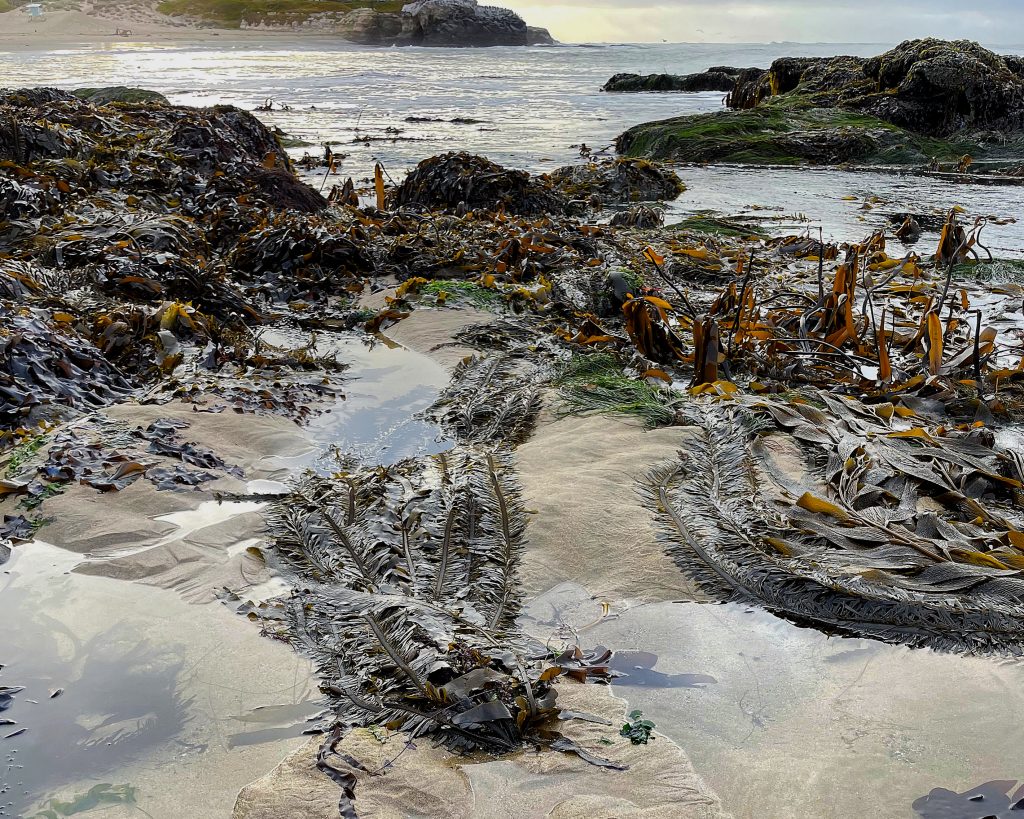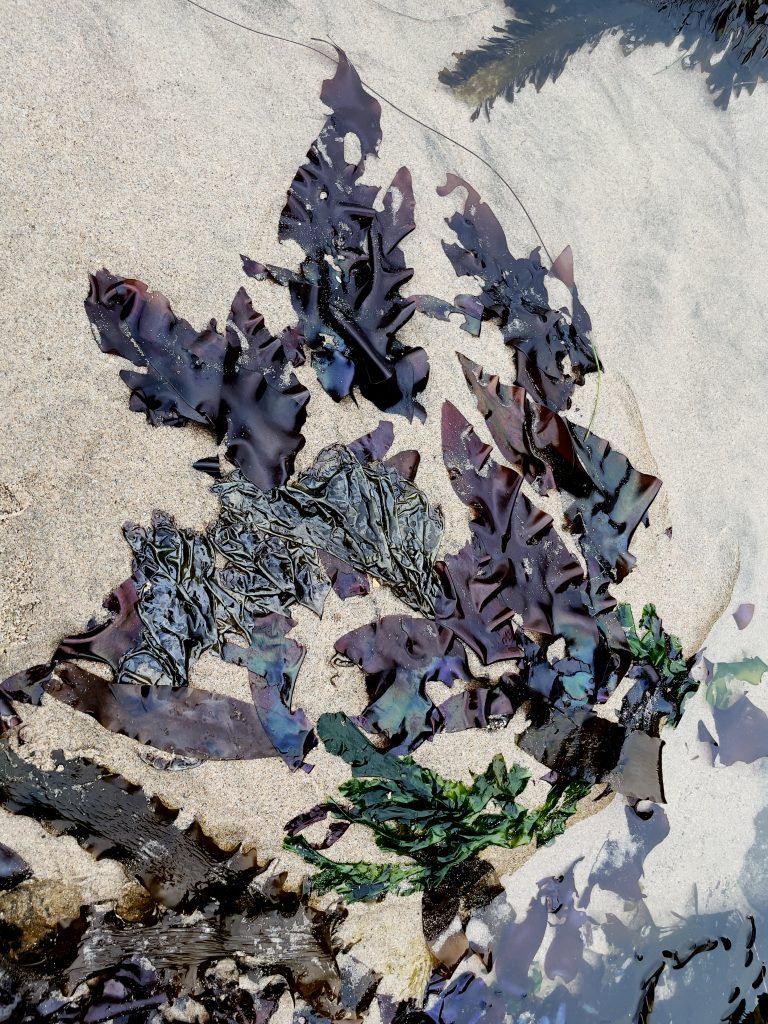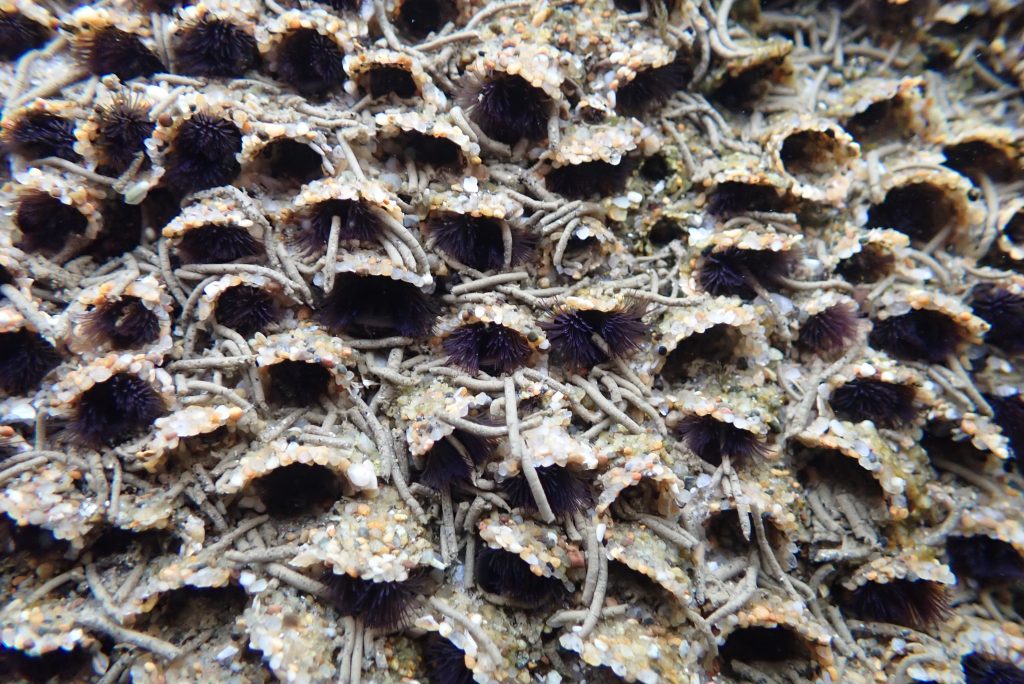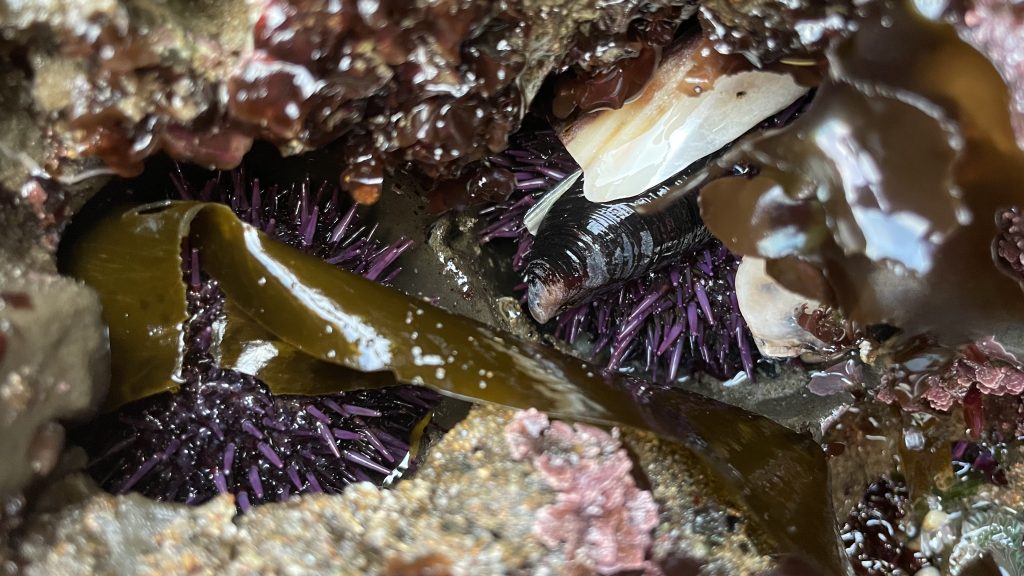Last week we had some of the best low tides of the season, and I was grateful to spend three consecutive mornings in the intertidal. The picture-taking conditions were fantastic when I went to Natural Bridges, and I snapped away like a madwoman. Unfortunately, last week was also finals week, and it wasn’t until I got all of the grading done and actual grades submitted that I let myself look at the photos. And there were a lot of good ones!
There are many wonderful things about the early morning low tides. One of the best is that most people prefer to remain in bed rather than get up before the sun and splash around in cold water. The past several weeks had been very busy, with little time for solitude, and I badly needed some time by myself in nature.
Usually when I post an entry here I have a story to tell. This time I don’t, unless the photos themselves tell the story. Let me know what you think.

2022-05-17
© Allison J. Gong
Act I
At this time of year the algae are the stars of the show. They are at their most lush and glorious for the next several weeks.

2022-05-17
© Allison J. Gong
Even in the sand, the algae were abundant and conspicuous. In the low intertidal the most prominent algae are the kelps. Here the feather boa kelp (Egregia menziesii) and the various Laminaria species are doing really well. Egregia also occurs higher in the intertidal, but Laminaria and Macrocystis (just visible along the right edge) are low intertidal and subtidal species.

2022-05-17
© Allison J. Gong
My absolute favorite sighting of the morning was this group of algae on top of the sand. I love the way that the algae are splayed out. They are just so pretty!

2022-05-17
© Allison J. Gong
Macrocystis pyrifera is justifiably well known as the major canopy-forming kelp along our coast. But it does occur in the low intertidal, as mentioned above.

2022-05-17
© Allison J. Gong
Intermission
Act II
And now to focus on some individual organisms. Starting with my favorites, the anemones. This time it was the giant green anemone, Anthopleura xanthogrammica, that was the star of the show.

2022-05-17
© Allison J. Gong
I experimented with close-up shots, too!


2022-05-17
© Allison J. Gong
There was a clingfish (Gobiesox meandricus), in its usual under-rock habitat. Don’t worry, I made sure to carefully replace the rock as I found it. This fish was about 10cm long. It may be the first clingfish I’ve ever seen at Natural Bridges. Clearly, I need to do more rock flipping.

2022-05-17
© Allison J. Gong
A clingfish’s pelvic fins are fused together and modified to form a suction cup on the ventral surface. Clingfish can hop around a bit and are super cute when they eat. They sort of dart forward and land on the food, then shuffle around as they ingest it.
The coralline algae were both abundant and flourishing. They are looking fantastic this season. Someday I’ll study up on the coralline algae and write about them. For now, here are some happy snaps of Bossiella.



2022-05-17
© Allison J. Gong
Such a beautiful organism!
Sticking with the pink theme, another oft-overlooked organism is the barnacle Tetraclita rubescens. It has a few common names, including pink volcano barnacle and thatched barnacle. It is the largest of the intertidal barnacles along the California coast, and can be fairly abundant in some places. It is never as abundant as the smaller white (Balanus glandula) and gray/brown (Chthamalus dalli/fissus) barnacles, though.

2022-05-17
© Allison J. Gong
Which brings us to my favorite color, purple. The tentacles of the sandcastle worm, Phragmatopoma californica, are a beautiful shade of purple. You don’t get to see the tentacles unless the worm is under water, and with the tide as low as it was when I was there this past week, it wasn’t easy finding any Phragmatopoma that were submerged. I’ve written about Phragmatopoma before, so won’t go into details here. But look at all those fecal pellets!

2022-05-17
© Allison J. Gong
And last but not least, here are a couple of the many purple urchins (Strongylocentrotus purpuratus) out there. At Natural Bridges there’s a large pool fairly high in the mid-intertidal that is called the Urchin Pool because it contains dozens (hundreds?) of urchins. Most of them are burrowed into the soft rock. Those are sort of easy pickings. I like finding urchins in less-obvious places, like these.

2022-05-17
© Allison J. Gong
Urchins in the intertidal often cover themselves with bits of shell, small pebbles, and algae. This helps them retain water as the tide recedes. At a location where the rock is soft, such as Natural Bridges, many of the urchins have grown larger than the opening to their burrow and cannot leave to forage; these imprisoned urchins have to wait for pieces of algae to drift nearby, which they can grab with their tube feet and then transport to the mouth on the underside. So long as they don’t get pried out by otters, the urchins seem to do just fine.
I think that’s enough for now. I hope these photos give you some idea of what it was like out there a week and a half ago. The next excellent low tide series is in mid-June. Snapshot Cal Coast will be in full swing then, so get out there if you can!

Thank you for doing what you do. I really enjoy your perspective and appreciate your vast knowledge. Please keep it up!